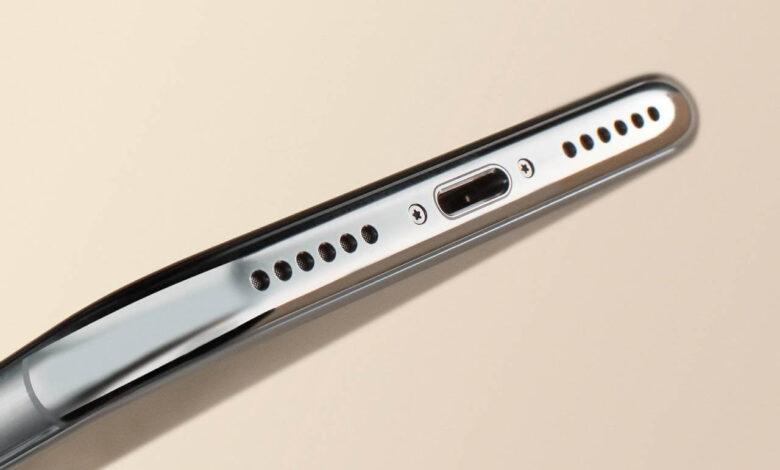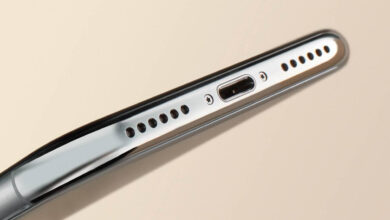Where is the Speaker Located on My Phone? Uncovering Your Device’s Audio Source

When trying to enjoy a video or take a call hands-free, knowing the location of your phone’s speaker is key. On most Android phones, you’ll find a speaker icon that indicates the phone’s audio status and helps you manage sound functions. This icon usually features a graphical speaker with lines to suggest sound coming out, and you might find it at the bottom of the screen beside other controls like the camera and microphone settings.
If you’re an iPhone user, your device typically has two sets of speakers: one on the bottom edge and one near the top front, nestled by the front-facing camera and sensors. These are designed to work in tandem for phone calls and media playback to give you clear, stereo sound.
Understanding the position of these speakers not only adds convenience but also ensures you get the best out of your device’s audio capabilities, whether you’re blasting your favorite tunes or catching up with friends over a call.
General Speaker Locations on Smartphones
When you’re looking to find the speaker on your smartphone, it’s typically located in one of four key areas, depending on the design and model of your device.
Front-Facing Speakers
Your phone may have front-facing speakers, which are positioned directly on the front of your phone, often above and below the display. This design aims to direct sound straight towards you for an immersive experience, especially when watching videos or playing games.
Bottom-Firing Speakers
Many phones are equipped with bottom-firing speakers. Look towards the base of your phone; you’ll typically find the speaker grill here, consisting of rows of small holes that allow sound to pass through more effectively when the phone is held upright.
Top Edge Speakers
Some models feature speakers on the top edge of the phone. This is less common but primarily serves as a secondary speaker to provide stereo sound in conjunction with the bottom speaker.
Back-Facing Speakers
Lastly, back-facing speakers are located on the rear surface of some older or budget models. Sound from these speakers can be muffled when the phone is placed on flat surfaces, but they remain a component of certain designs.
Identifying Speakers on Your Phone
Finding the speakers on your smartphone is straightforward. All you need to know is where to look and what to listen for.
Visual Inspection
Your phone’s speaker grills are usually easy to spot. Look for small openings on your device, which may appear as rows or dots. On Android phones, speakers can often be found at the bottom edge or on the back, while iPhones typically have speakers at the bottom edge and the top front. You should see fine mesh or perforations right where the sound comes out.
Sound Test
If visual inspection doesn’t make it clear, try a sound test. Play some audio and gradually cover different parts of your phone with your hand to determine where the sound is loudest. For example, if you cover the bottom of the phone and the sound diminishes significantly, it’s likely there’s a speaker there.
Phone Documentation
The manual or user guide that came with your phone should have a diagram indicating the location of the speakers. If you don’t have the physical copy, you can usually find a digital version on the manufacturer’s website under the support section. Look for sections labeled “Hardware Overview” or “Getting to Know Your Device.”
Types of Speakers in Phones
Your phone houses a complex audio system designed to cater to different functions. Understanding the role of each speaker helps you optimize your listening experience.
Ear Speaker
The ear speaker, often positioned at the top front of your phone, is integral during phone calls. It allows you to hear the caller clearly and is typically located near the front-facing camera and sensors. This speaker is designed to direct sound straight to your ear.
Loudspeaker
The loudspeaker serves a broader purpose and is mainly responsible for media playback and speakerphone functions. You’ll usually find this speaker at the bottom of your phone, where the primary audio output occurs. It emits sound outward, allowing for a louder volume suitable for watching videos, playing games, or sharing call audio with others.
Functionality of Phone Speakers
Your phone’s speakers are a crucial component for several functions, from rocking out to your favorite tunes to ensuring you don’t miss important calls and messages.
Media Playback
Your phone’s speakers allow you to enjoy music, watch videos, and play games with audio. The sound quality for media playback can vary based on the speaker’s hardware and positioning on your device, but here’s what you need to know:
- Bottom-firing speakers: Often located at the bottom edge of your phone for a direct sound experience during handheld use.
- Front-firing speakers: Some phones offer front-firing speakers for a more immersive audio experience, especially noticeable when the device is held in landscape mode.
Ringtones and Notifications
When it comes to ringtones and notifications, your phone’s speaker plays a short, often loud sound to alert you of incoming calls, messages, or app alerts. Consider these points:
- Customization: You have the option to choose different sounds for different types of notifications to distinguish them easily.
- Volume: You can adjust the volume for ringtones and notifications separately from media playback in your phone’s settings.
In-call Audio
The in-call audio is what you hear during a phone call. Here’s how your speakers function in this context:
- Earpiece speaker: Located at the top front, this speaker lets you hear the caller. It’s designed for close proximity to your ear for privacy and clarity.
- Speakerphone mode: Engaging the speakerphone feature activates the main speakers and allows hands-free conversation, enabling you to hear the caller without putting the device to your ear.
Issues and Troubleshooting
When encountering speaker problems on your phone, it’s essential to understand both the common issues that can occur and the steps you can take before considering a professional repair.
Common Speaker Problems
Your phone’s speaker can encounter a range of issues, often indicated by symptoms such as no sound, distorted audio, or low volume. Water damage can be particularly problematic, sometimes requiring you to eject water from your phone’s speakers. Other problems could include the speaker cutting out during playback or crackling sounds, which hint at potential hardware or software issues.
Basic Troubleshooting Steps
Start by checking if your device’s volume is at an adequate level and isn’t muted. Next, ensure no obstructions, like dust or debris, are blocking your speaker grille. A soft reboot of your device—turning it off and then on again—can sometimes resolve temporary glitches. Should you suspect water has gotten into your speakers, a targeted solution to eject water from your phone’s speakers can be helpful. If software-related concerns like settings or temporary data are suspected, consider resetting your phone settings or clearing the cache partition through recovery mode.
Professional Repair
If basic troubleshooting steps don’t resolve the speaker issue, your phone may require a professional repair. For instance, if the speaker itself is damaged or if there’s a deeper, more complex technical issue, it’s best to seek assistance from a certified repair center or direct manufacturer support. Remember, attempting complex repairs yourself can risk further damage to your phone.
Enhancing Speaker Performance
Improving your phone’s speaker performance hinges on fine-tuning software settings, using the right accessories, and consistent maintenance. These steps can help you get the best audio experience from your device.
Software Settings
Your phone’s settings are the first place to look for enhancing audio clarity and volume. Navigate to your device’s audio settings and explore options such as:
- Equalizer: Tailor the sound output by adjusting the frequency sliders.
- Volume Limit: Ensure it’s off or set to maximum to get the fullest sound.
Tip: For Android users, enabling ‘Disable absolute volume’ in the Developer options may improve Bluetooth device performance.
Accessory Use
Choosing the right accessories can significantly improve speaker sound.
- Cases: Make sure your case does not block or muffle the speaker.
- External Speakers: Connect to external speakers or a sound system for a louder volume and richer sound quality.
Regular Maintenance
Keeping your phone clean is vital:
- Speaker Grilles: Use a soft brush to gently clear any debris from the speaker grilles.
- Software Updates: Regularly update your phone to ensure optimal performance.
Note: Avoid using water or moisture to clean the speakers as this can cause damage.
Latest Trends in Phone Speaker Design
As you keep up with modern smartphones, you’ll notice that manufacturers are focusing on both aesthetics and functionality when it comes to speaker design.
Innovative Speaker Placement
Smartphone manufacturers are constantly experimenting to optimize the location of speakers on your phone. For instance:
- Top and Bottom: You’ll often find stereo speakers with one on the top and one on the bottom, ensuring sound dispersion that engulfs you in audio.
- On the Side: Some designs have integrated a speaker on the side near the volume buttons for more direct sound when holding the device.
Technological Advancements
The technology behind phone speakers has also seen several significant advancements, such as:
- Under-Display Speakers: Utilizing piezoelectric vibrations, some phones now project sound directly through the display.
- Advanced Materials: The use of high-quality materials in speaker construction has improved sound clarity and richness.
Remember to keep an eye on these trends as they point to where the future of smartphone audio is headed.
